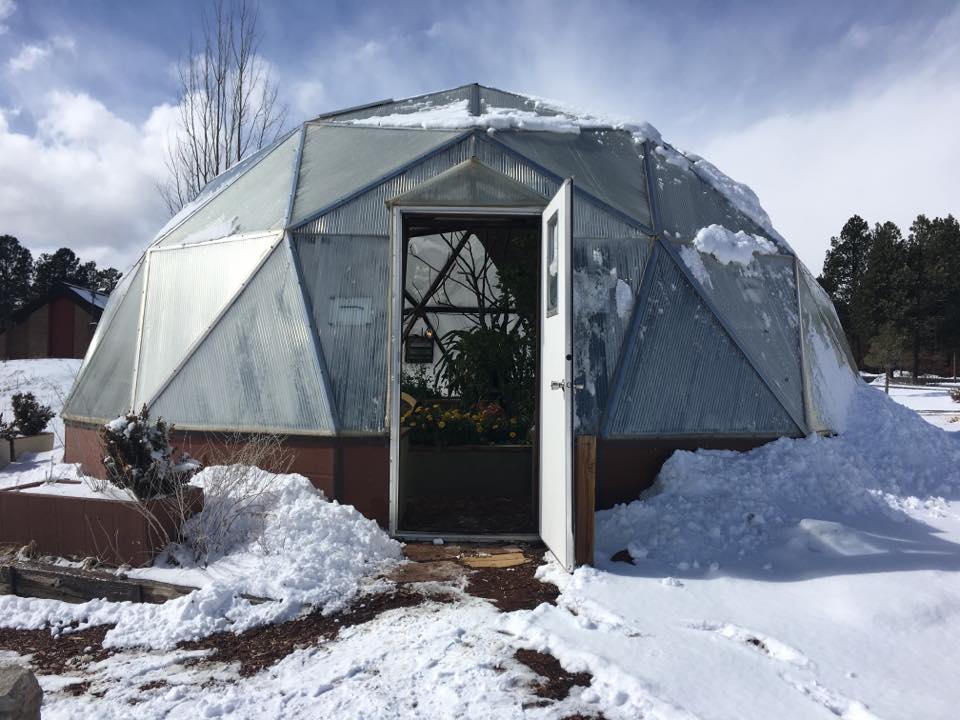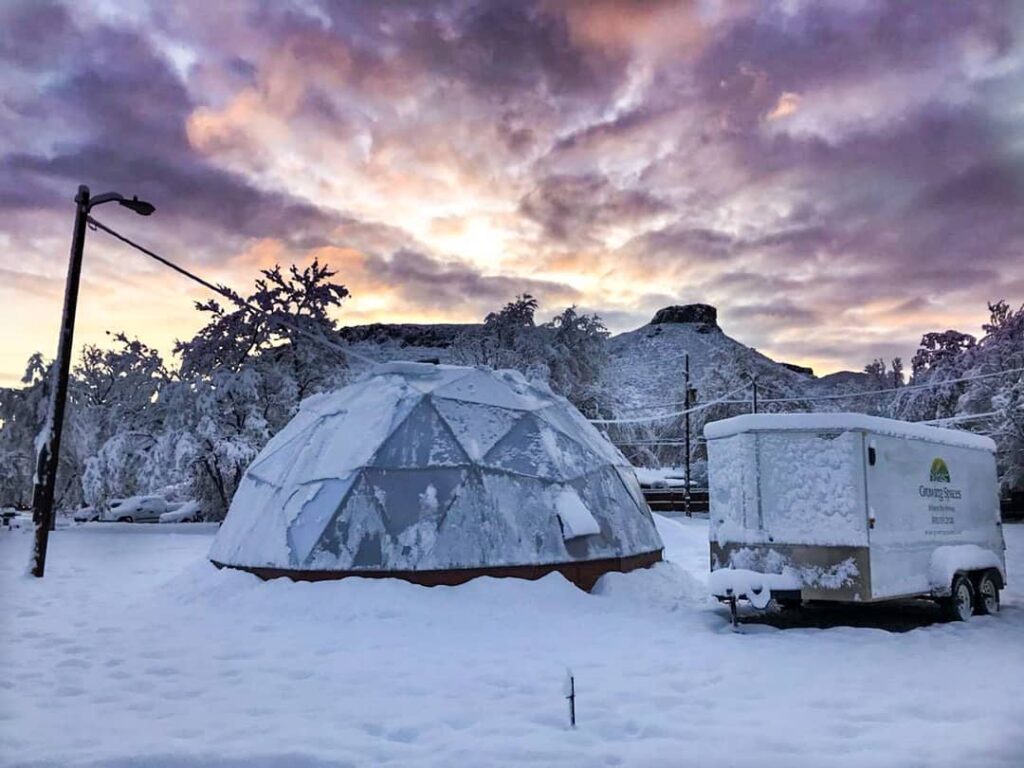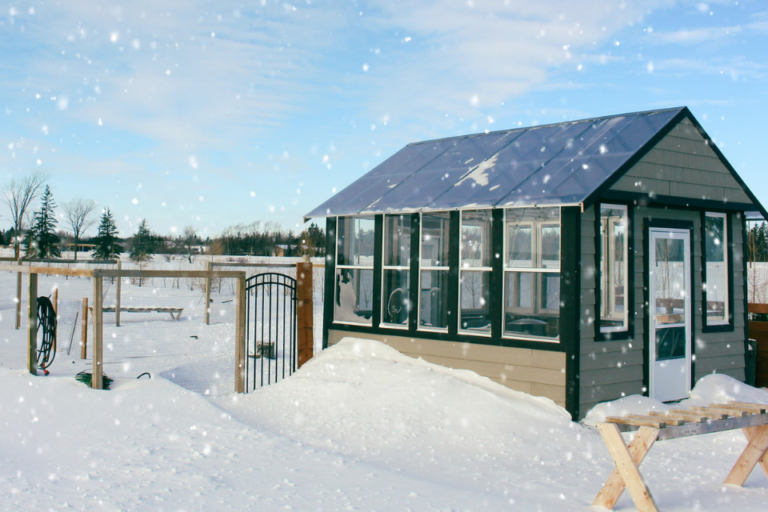Building a year-round greenhouse in cold places needs good plans. We need to focus on keeping warmth inside by using insulation, special glass, and making sure the greenhouse faces the sun well. Inside, we should have things like materials that can hold heat and systems to let air move. A good heating system, like electric or solar, is important too. To control the temperature, we can use sunlight cleverly, coverings that keep heat in, and things like water containers to hold heat.
Furthermore, it’s smart to choose plants that can handle the cold. We need to watch the greenhouse regularly, use automatic systems, and have a plan for when it snows. It can cost a lot to set up and needs regular care.
What’s the Best Design for Cold Climate Greenhouses?

These detailed design considerations, greenhouse operators can create an environment that maximizes plant growth and health, optimizing production even in cold climates throughout the year.
Structural Design
Materials
Utilizing materials with high insulation properties like double or triple-layered polycarbonate or glass can reduce heat loss.
Including materials with high thermal mass (like stone or concrete) can absorb and release heat, stabilizing temperature fluctuations.
Options such as aluminum, galvanized steel, or even timber, chosen for durability against harsh weather conditions.
Insulation
Ensuring adequate insulation in walls and roofs to minimize heat loss during colder seasons. Sealing gaps and employing weather stripping around doors, windows, and vents to prevent heat escape. Installing thermal curtains or shades to retain heat during the night and conserve energy.
Orientation and Placement
Orienting the greenhouse to maximize exposure to sunlight throughout the day, especially in colder months.
Placing windbreaks, such as trees or walls, strategically to protect the greenhouse from harsh winds.
Choosing a site with good drainage, proper sunlight, and minimal shading from surrounding structures or trees.
Heating Systems
Types of Heating Systems
Using fans and ducts to distribute heated air evenly throughout the greenhouse. Employing underfloor or overhead radiant heating systems for more uniform heat distribution. Utilizing renewable resources like wood pellets or agricultural waste for heating.
Energy Efficiency
Installing efficient thermostats and automation systems to regulate temperatures based on plant needs. Ensuring heat distribution systems are well-insulated to minimize heat loss.
Employing systems that capture and reuse excess heat for improved energy efficiency.
Alternative Heating Methods
Utilizing geothermal heat pumps to tap into the stable temperature of the earth for heating purposes. Incorporating design elements like south-facing glazing or thermal mass to capture and store solar heat.
Ventilation and Air Circulation
Importance of Ventilation
Ventilation helps maintain optimal growing conditions and prevents excess moisture buildup. Ensuring proper ventilation to facilitate the exchange of CO2 for photosynthesis.
Proper ventilation prevents condensation, reducing the risk of fungal diseases.
Air Circulation Systems
Using fans and louvers to regulate airflow and maintain consistent temperatures. Employing fans strategically to ensure uniform distribution of heat and CO2 throughout the greenhouse.
Incorporating windows, vents, and roof openings for passive airflow when weather conditions permit.
Managing Humidity and Temperature
Employing dehumidifiers or natural ventilation to manage humidity levels, preventing excess moisture. Installing sensors to monitor temperature variations and adjust ventilation and heating systems accordingly.
Moreover, using retractable thermal screens to regulate temperature and reduce heat loss during colder periods.
How to Choose Plants for Cold Climate Greenhouses?
By carefully selecting cold-hardy plants, employing effective crop rotation strategies, and implementing proactive pest and disease management techniques, greenhouse operators can maintain a healthy and productive environment for year-round cultivation in cold climates.
Cold-Hardy Plants
- Leafy Greens: Varieties of lettuce, kale, spinach, and Swiss chard thrive in cooler temperatures.
- Root Vegetables: Carrots, radishes, beets, and turnips are resilient in colder conditions.
- Brassicas: Cabbage, broccoli, cauliflower, and Brussels sprouts can withstand colder temperatures.
- Herbs: Some herbs like parsley, cilantro, chives, and thyme can grow well in cooler environments.
- Berries: Certain berry varieties like strawberries and some types of raspberries can adapt to cooler conditions.
Considerations for Growth and Maintenance
Understanding specific temperature and light needs of each plant species for optimal growth. Providing adequate but not excessive watering, and managing humidity levels to prevent issues like mold or mildew.
Ensuring proper soil nutrition through fertilization or organic matter for healthy plant development. Selecting varieties that are naturally resistant to common pests and diseases in cold climates.
Crop Rotation and Management
Strategies for Year-Round Harvest
Staggering plantings to ensure a continuous supply of crops throughout the year. Choosing plant varieties with varying maturation times to maintain a consistent harvest.
Using covers or cloches to extend the growing season and protect crops from frost.
Crop Rotation Techniques
Rotating crops to prevent the depletion of specific nutrients and minimize disease buildup. Avoiding planting crops from the same family successively to reduce the risk of pests and diseases. Planting cover crops during off-seasons to enhance soil fertility and structure.
Pest and Disease Management
Implementing strategies like beneficial insects, traps, and biological controls to manage pests. Regularly cleaning greenhouse equipment, tools, and trays to prevent the spread of diseases.
Regularly inspecting plants for signs of pests or diseases to take immediate action when necessary. Using organic solutions like neem oil or companion planting to naturally repel pests and control diseases.
How to Practice Sustainability in Greenhouse Farming?
By implementing these sustainable practices in water management, soil health, and pest management, year-round greenhouses can significantly reduce resource consumption, minimize environmental impact, and foster a healthier growing environment for plants.
Water Management
Efficient Water Use
Implementing drip systems to deliver water directly to the plant roots, minimizing waste through evaporation.
Collecting and reusing water from various sources, such as rainwater harvesting or condensation from HVAC systems.
Applying mulch or ground cover to retain soil moisture and reduce evaporation.
Irrigation Systems
Utilizing sensors and automated systems to regulate watering based on plant needs, avoiding overwatering.
Installing systems that allow plants to draw water from below, reducing surface evaporation and optimizing water usage.
Combining irrigation with fertilization to deliver nutrients directly to plants, enhancing efficiency and reduces runoff.
Soil Health and Fertilization
Soil Amendments
Adding compost or organic materials to improve soil structure, moisture retention, and nutrient content.
Growing specific plants during off-seasons to enrich soil fertility, control erosion, and suppress weeds.
Regularly testing soil pH and nutrient levels, adjusting with natural amendments like lime or organic fertilizers.
Composting and Recycling Practices
Establishing composting systems to recycle organic waste from the greenhouse, creating nutrient-rich soil amendments.
Employing closed-loop systems in hydroponic or aquaponic setups to reuse nutrient-rich water.
Integrated Pest Management (IPM)
Natural Pest Control Methods
Introducing predatory insects like ladybugs or lacewings to control pests without chemical intervention.
Planting certain species together to repel pests or attract beneficial insects. Using barriers like nets or sticky traps to prevent pest entry or capture them without chemicals.
Reducing Chemical Dependency
Only resorting to pesticides when other control measures are insufficient, and choosing eco-friendly options.
Regularly inspecting plants for early signs of pest infestation to address issues before they escalate.
Training staff on proper pest identification and IPM techniques to minimize unnecessary chemical use.
What Are the Costs and Benefits of Year-Round Greenhouses?

The economic viability of year-round greenhouses in cold climates can vary based on factors like the scale of operations, market demand, local regulations, and the specific crops being cultivated.
Cost Considerations
Initial Setup Costs
Expenses related to greenhouse construction, including materials, labor, and permits. Costs associated with installing heating, ventilation, and insulation systems suitable for cold climates. Investment in technology such as climate control systems, irrigation, and monitoring equipment.
Operational Expenses
Regular expenses for heating, lighting, and ventilation systems, which can be higher in colder climates. Hiring and retaining skilled labor for crop management, maintenance, and greenhouse operations. Regular upkeep, repairs, and replacements of greenhouse infrastructure and equipment.
Benefits and Challenges
Economic Benefits of Year Round Greenhouses
Allowing for continuous or extended crop production, potentially increasing overall yield and revenue.
Offering fresh, locally grown produce year-round, often at premium prices, which can enhance profitability.
Decreasing reliance on importing produce from distant locations, potentially reducing transportation expenses.
Challenges and Potential Limitations
The considerable upfront costs for infrastructure and technology can be a barrier to entry for some growers. Heating and maintaining optimal temperatures in cold climates can significantly contribute to operational expenses.
Meeting market demand for year-round produce may be challenging in regions with established seasonal farming practices. Relying on technology for climate control and automation poses risks of system failures or malfunctions, affecting production.
FAQ’s
Do you need heat in a greenhouse in the winter?
Yes, heating is typically required in a greenhouse during winter to maintain suitable temperatures for plant growth, especially in colder climates.
How cold is a cold greenhouse?
A “cold greenhouse” usually maintains temperatures just above freezing, around 1-5 degrees Celsius (33-41 degrees Fahrenheit) during winter without supplemental heating.
Does a greenhouse work for all seasons?
Yes, a well-designed greenhouse can function effectively in all seasons, but adjustments and proper temperature control mechanisms are essential to accommodate different environmental conditions.
What is the best temperature for a greenhouse?
The optimal temperature for a greenhouse varies based on the plants being cultivated. Generally, temperatures between 21-27 degrees Celsius (70-80 degrees Fahrenheit) are ideal for many plants.
What is the ideal temperature for a greenhouse in Celsius?
The ideal temperature for a greenhouse is typically around 21-27 degrees Celsius, creating a favorable environment for most plant growth.
Can you grow in a greenhouse year-round?
Yes, with proper planning, insulation, heating, and temperature regulation, it’s possible to grow plants year-round in a greenhouse, regardless of the external weather conditions.
Final Words
In summary, year-round greenhouses in cold places help us grow plants even when it’s cold outside. They need good design to stay warm and keep the plants cozy. If we pick the right plants and take care of water, soil, and pests, these greenhouses can be good for nature. Though they can be expensive to start and use a lot of energy, they give us more time to grow food and fresher fruits and veggies. Even though there are some challenges like high costs and using lots of energy, year-round greenhouses are a great way to farm in a friendly way and have fresh food all year.

